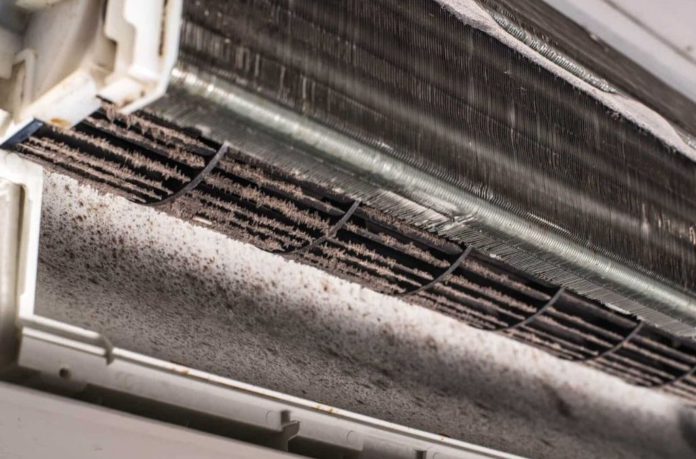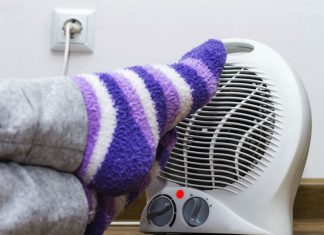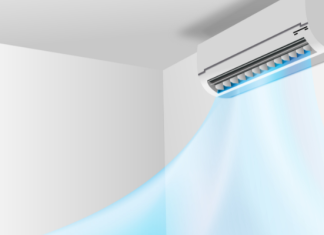If you’ve ever walked past your air conditioning unit and caught a whiff of something musty, it’s probably not your imagination. Mould loves dark, damp environments — and unfortunately, your cooling system can be the perfect breeding ground if it’s not maintained properly. While most people focus on temperature settings and airflow, the real threat often lies in how your system handles moisture.
One of the key components that helps manage this moisture is something most homeowners overlook: condensate pumps. These small but essential devices remove the excess water produced by your air conditioner, and if they stop working correctly, that water can build up and lead to mould — often in places you can’t see until damage is already done.
Why Your AC Creates Moisture in the First Place
Cooling systems work by pulling warm, humid air across evaporator coils, which cools the air and removes moisture in the process. That moisture then drips into a condensate pan and should drain safely away from your home.
But here’s the catch: not all systems can rely on gravity alone to drain that water. That’s where a condensate pump steps in. It actively pushes the water to a safe drainage area. If it clogs, fails, or gets neglected, standing water becomes a prime invitation for mould spores to move in.
The Hidden Dangers of Mould Around Your HVAC
Mould isn’t just an aesthetic issue — it can pose health risks and lead to costly damage. Left unchecked, it can:
- Trigger allergies or respiratory symptoms
- Spread to insulation, drywall, or flooring
- Lower the air quality throughout your entire home
- Damage the HVAC system itself
And because mould thrives in dark, enclosed, and damp places, the interior of your AC unit or the surrounding area is ideal. By the time you smell it or notice signs, it may have already spread beyond the point of a quick fix.
Where to Look for Early Signs of Mould
Regular checks can help you catch moisture and mould issues early. Here are the most common areas to inspect:
- Around the indoor unit, especially near the condensate drain
- Inside the drain pan, which should be clean and dry
- Along insulation near ductwork or piping
- On nearby walls or baseboards, where water may have leaked
- Inside air vents, especially if they smell musty
A torch and a nose are your best tools — if something smells damp or earthy, trust your instincts and investigate further.
Preventative Steps You Can Take Right Now
Preventing mould is all about managing moisture, airflow, and cleanliness. Here’s how to stay ahead of it:
1. Keep the Drain Line Clear
Pour a diluted vinegar solution into your AC’s drain line every few months to flush out debris and prevent blockages.
2. Clean or Replace Filters Regularly
Clogged filters reduce airflow, causing your system to work harder and increasing condensation. Check filters monthly and change them as recommended.
3. Schedule Routine HVAC Maintenance
A professional technician can spot issues you might miss — like slow drainage, internal mould, or a failing pump.
4. Check and Test the Pump
If your system uses a condensate pump, test it by slowly pouring water into the drain pan. The pump should activate and move the water. If it doesn’t, or if water backs up, it may be time for a replacement.
5. Use a Dehumidifier
In especially humid climates, an extra dehumidifier near your AC can help reduce overall moisture levels, making it harder for mould to form in the first place.
Is It Time to Replace Your Pump?
Condensate pumps have a lifespan of around 3 to 5 years, depending on usage and maintenance. If yours is older, noisy, or shows signs of leaking or slow drainage, it may be safer (and cheaper long-term) to replace it before it fails.
Look for models with added features like:
- Overflow alarms
- Transparent covers for easy inspection
- Anti-mould materials or coatings
A small investment now can save you thousands in water damage and mould remediation later.
Clean, Cool, and Mould-Free
Mould might be quiet, but it’s persistent — and when your cooling system gives it the perfect place to grow, it won’t hesitate. But with just a bit of awareness and some basic upkeep, you can stop it before it starts.
Think of your cooling system as more than just a machine that keeps you comfortable. It also plays a major role in your home’s air quality and overall health. And by paying attention to the moisture it produces — and how that moisture is handled — you’ll breathe easier in every sense of the word.













